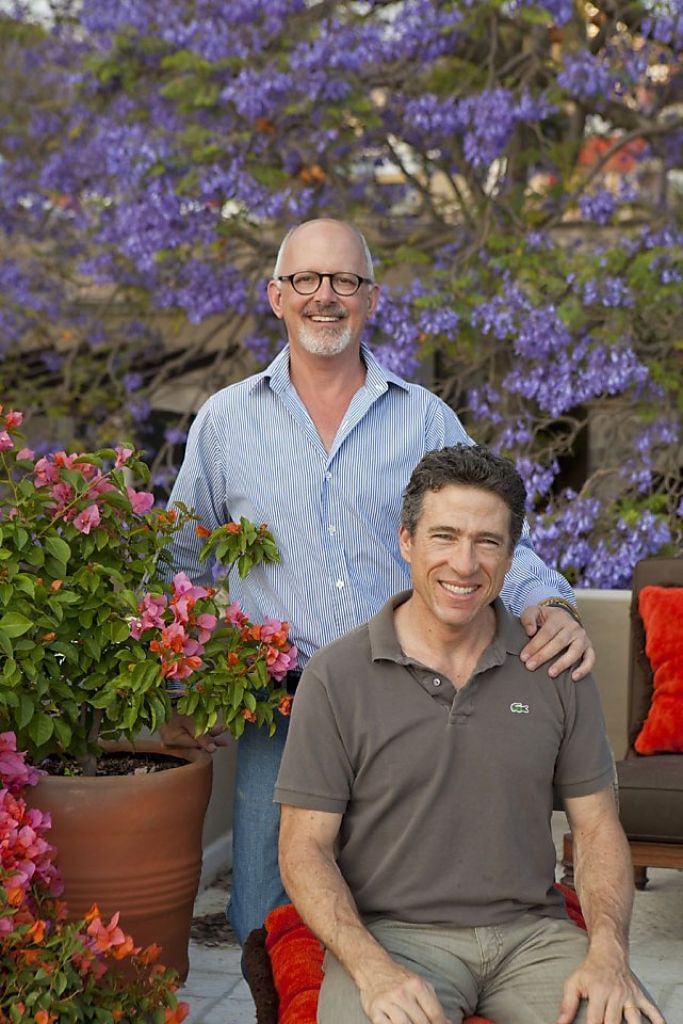THE ARTFUL INVENTIVENESS OF FISHER WEISMAN / SF Chronicle
Clients who can’t see the beauty in the whimsy – or the whimsy in the beauty – of a room done in elegant furniture surrounded by quilt-like wall hangings made of stained and painted coffee filters probably aren’t the best match for interior designers Andrew Fisher and Jeffry Weisman.
“It’s important that the room has surprises,” Weisman said. “It needs elegance and sophistication, but something unexpected and sexy. That’s what makes us excited.”
The marriage of the classical and the inventive is the hallmark of the San Francisco decorating duo, whose Fisher Weisman firm is regarded as among the nation’s best. Their unbridled imagination is on full display in their first book, “Artful Decoration: Interiors By Fisher Weisman” (The Monacelli Press; 2013), to be released March 19.
The book’s 223 pages showcase 13 interior design projects from around North America, from an urban Nob Hill apartment to a stately Pacific Heights residence, and a quirky Sonoma home built from a stone winery to their own exotic vacation pad in San Miguel de Allende, Mexico.
As Margaret Russell, editor in chief of Architectural Digest writes in the foreword, “Interior designers have been making our world a more beautiful place for centuries. Decorators who create magic – whose work transports us to another realm – are rare indeed. Among those geniuses today are Andrew Fisher and Jeffry Weisman of Fisher Weisman.”
Fisher, who studied sculpture, drawing and metalsmithing at California College of the Arts and worked with Tony Duquette and John Hallock, creates fantastical pieces of art for the projects they undertake, whether collages, chandeliers draped in seashells, or tables with hand-carved mahogany bases.
Weisman, who studied drawing at Stanford under Nathan Oliveira and worked at the firms of Skidmore, Owings & Merrill and Gensler before going to business school, likes to pull together the details, edit and shepherd the design process to completion. The two joined forces in 1999.
Among the more eye-popping surprises in the book is a Sonoma County tree house that the couple built for themselves (and has since sold). Its 400 square feet are suspended between two fir trees. No rustic cabin, the abode is pictured with stained glass doors.
Regal armchairs (vintage fauteuils) are lined in pale silk painted to resemble wood grain and their legs and backs are trimmed in pale seashells. Tables with gilded tops and antique tree bases provide a home for objets d’art, and floor-to-ceiling drapes add a sumptuous, tent-like sophistication.
The pair have worked on homes around the Bay Area, Sun Valley, Idaho; Los Angeles, the Midwest, and now, in Mexico, where they intended to have a vacation home but found plenty of interested clients. They’re inspired by their travels, and re-create pieces based on exotic items they have seen in souks and bazaars around the world.
The book, Weisman said, is intended to introduce their work to a wider audience. “We’re in our 50s and it feels like it’s a good time to do reach out to a wider group and see what amazing projects will be out there for this next chapter of our lives.”
It’s not as if they don’t have enough going on already. Fisher, who mounts gallery shows of his own artwork, is coming out with a new series of paper and fabric quilts using 24-karat gold leaf and paint, which Weisman described as “a cross between (Gustav) Klimt and Cleopatra – ancient and modern at the same time.”
The pair are also launching a furniture line called Casa Acanto named after their home in Mexico and their love of acanthus leaves as a design motif. It will feature desks, tables and accessories designed by Fisher with his own twist, and will be sold at www.casaacanto.com.
Their furniture business dovetails with a philosophy the two have always sought – to be distinctive – something that is increasingly imperative in today’s world of Internet shopping, where everyone can have the same thing everywhere.
“The democratization of design has created a huge resource for most people to do really nice things on their own, but it has also created a very generic look,” Weisman said. “The people who’ve come to us want something more original and more unique.
That’s something readers will find in spades in the pages of “Artful Decoration.”



